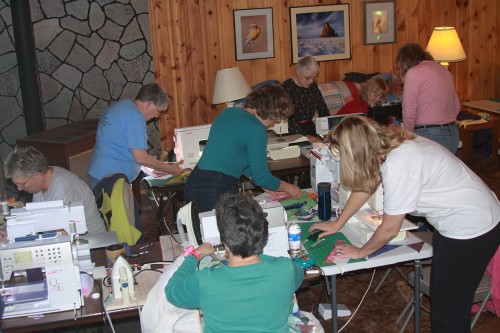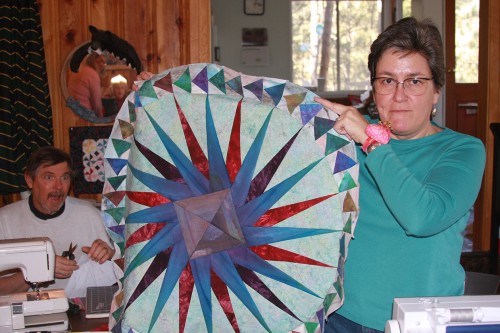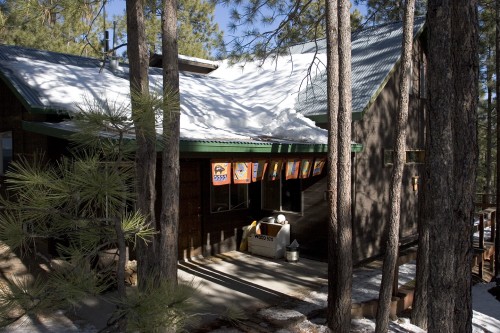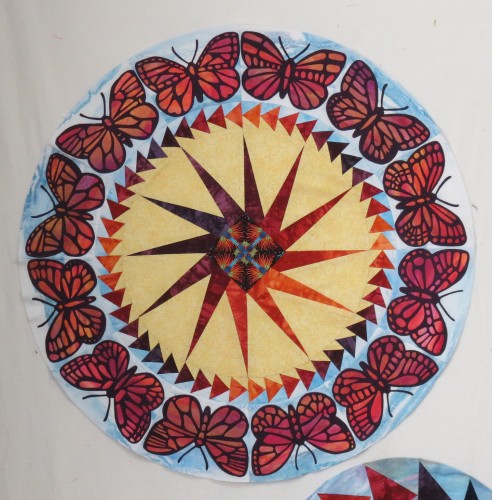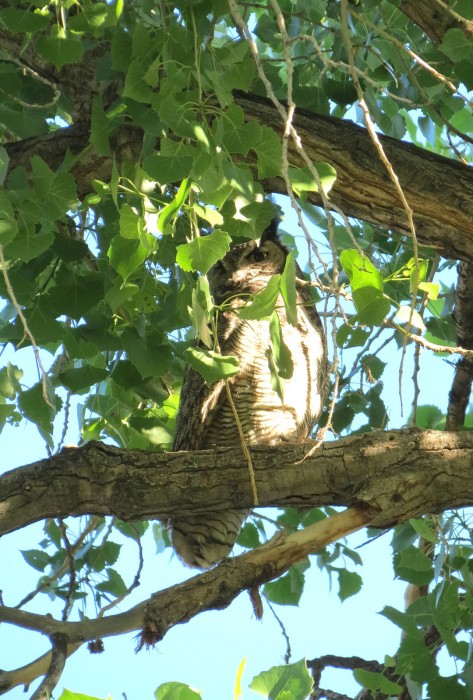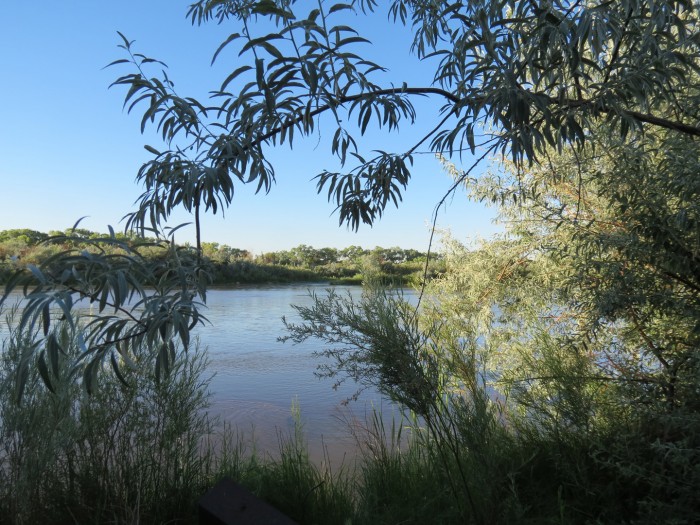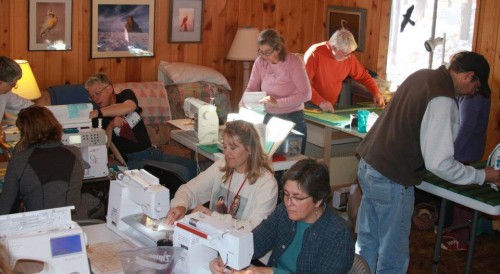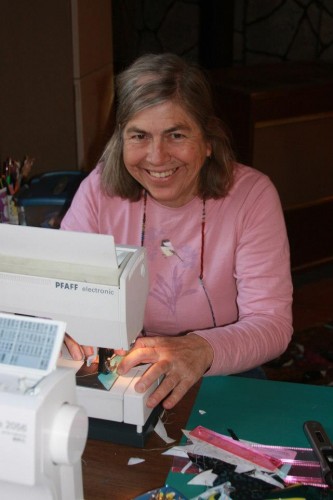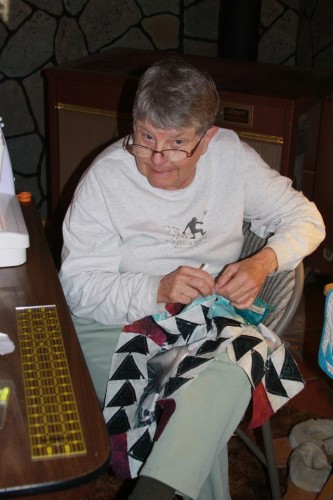It was a really rough week last week, one of those where just getting through every day is a chore. None of the posts I intended to write every made it to the ‘publish’ stage either. Normally, I only post about quilt-related material on this blog, but I also know that many of you, if not all of you, have heard stories of my beloved “Trouble”, the American Kestrel that lived with me for the past 19 and a half years. She crossed over the Rainbow Bridge last week after a sudden and rapid decline that began as soon as I arrived home from a teaching trip to New Jersey. I hope you will enjoy this post about my love affair with a very special bird.

The Christmas Kestrel
In the spring of 2014, we will celebrate the 20th birthday of Hawks Aloft, the organization that I, and other founded in 1994. It seems like yesterday; we were the new conservation organization in town, running on a shoe string budget thanks to our initial funders, Blue Sky Natural Beverage Company, the Frost Foundation, and our main benefactors Jerry and Sally Mayeux. We had a fledgling education program, a full-time educator, and a part-time director – me. We also hoped that, someday, we would be paid to conduct research. But, with few documented research credentials, we began our program with the help of volunteers and organization founders, Jerry Hobart, Jim Place, and Chuck Brandt. That was the beginning of the Raptor Monitoring Surveys in the Rio Grande and Estancia valleys, conducted entirely by volunteers then, and still an all-volunteer effort – 20 years later.
We borrowed raptors from others for our education programs and set about acquiring the necessary permits. We extend a big thank you to Shirley and Jack Kendall, who helped us submit the paperwork, and build the first outdoor flight cages that would become home to the educational ambassadors that captivate children and adults alike.

Trouble at the Cabin
Shirley called one day to tell me about a fledgling American Kestrel that had been found alongside a ditch in Albuquerque. The kestrel, a female, was placed with other young kestrels in a large flight cage at the Kendall Rehabilitation Facility in Corrales, where all would be provided with live mice so they could learn to hunt and hone their flight skills. But, this particular falcon had little interest in earning her meals. Instead, she begged loudly and plaintively whenever Shirley went out to feed the growing brood. It became obvious that this young female was a human imprint and would never be releasable.

Trouble Bathes, splashing water everywhere
She became our first official education bird, coming to live with me. A friendly little chit of a bird, she and I bonded immediately,as only and imprinted raptor can, chirring sweetly when I offered her mice or mealworms. It wasn’t long; however, before I noticed broken feathers and fault bars (or weak spots) in the ones that remained. Soon, nearly all of her feathers were broken at the tissue level, leaving her unable to fly, and similarly incapable of being outdoors, exposed to the elements. We named her Trouble, because her troubles were caused by a thoughtless human.

After the Bath – Drying off on Top of the Computer Monitor
At age one, after a year of proper diet, she grew good, strong feathers and a matching attitude. She learned to fly inside my house! Jack built her a 20’ long flight cage outside my kitchen window. She spent her days out there, but every night around dusk, she returned to the window to be let in, flying through the house to the bathroom, where she put herself to bed on the bathroom door.

Where Food Comes From
By then, she also had decided that we were an ‘item’, and I was a precious resource to be guarded at all times. Over the years, Trouble took out her wrath on our hapless educators and unwary visitors to my home, waiting silently on a high perch until their backs were turned, whereupon she launched the stealth attack, whacking them on the back of the head. Trouble charmed school children with her striking beauty, her unfortunate situation caused by humans, and her larger-than-life personality. She was, indeed, a legend among all who knew her.

Guarding the Mouse from me! The Mouse I had Just Handed to Her.
Although I knew that eventually the time would come to say good-bye, the little kestrel princess seemed to defy death time and time again. She escaped twice but was successfully recaptured both times after several anxiety filled days. We retired her at age fifteen, about three times the normal life expectancy for any American Kestrel. Still, she continued to thrive, coming indoors at night and hunting for mealworms in their plastic tub. One night last week, she came to the window as she always did, and I dutifully delivered the mealworm tub, but she refused to eat. It was then that I noticed her ragged appearance and brought her indoors. After a rapid decline, she crossed over the rainbow bridge the next morning.
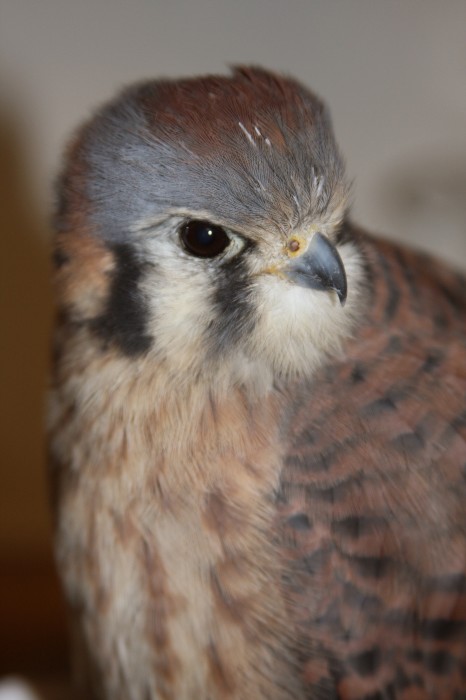
Trouble, the Kestrel Princess
Trouble won’t be with us for our 20th Anniversary celebrations next spring, but will live on in our memories – one remarkable falcon – the kestrel princess!
Thank you for bearing with me on this painful post.

